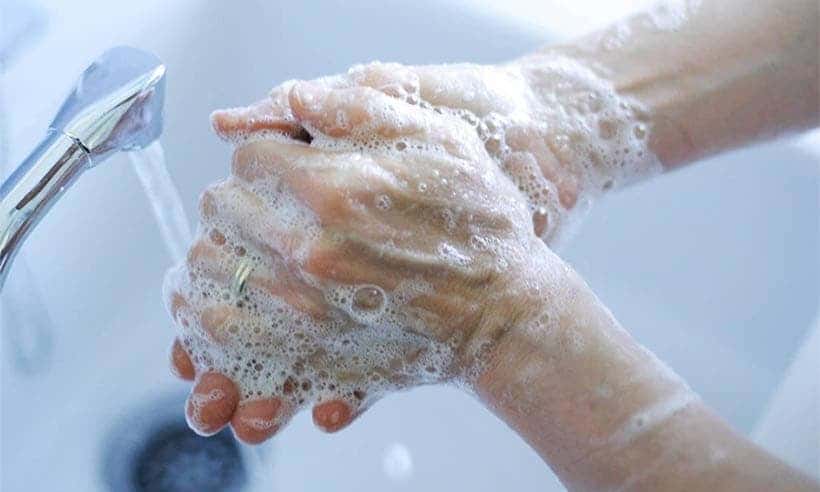As medical shortages are likely to continue for the foreseeable future, health organizations are now recommending we all use face masks at all times when we go outside — even if it’s improvised cloth masks.
We’ve already discussed which materials you need to consider when making a face mask (thick cotton) and how to make a face mask (it’s really easy), now let’s look at some good tips about how to wear and care for it properly.

A face mask does not make you invincible
No facemask offers foolproof protection against pathogens. Even with respirator masks, it’s easy to not fit them properly.
Furthermore, face masks aren’t really designed to protect you from COVID-19 — but rather, to protect other people from you. The idea is that if everyone wears them, we’re all protecting each other, and since the COVID-19 is often asymptomatic, you might have it and not even know it.
“So it’s not going to protect you, but it is going to protect your neighbor,” said infectious disease specialist Dr. Daniel Griffin at Columbia University, NPR reported.
All other precautions still stand, including washing your hands, sneezing in your elbow, and staying 2+ meters away from people who don’t live in your household. The most important thing, if possible, is to still stay home.
Wash your hands before you put it on, and after you take it off
This one should go without saying — but you need to put your mask on with clean hands. After you take it off, you should also wash your hands (we’ll see how to dispose/wash it properly in a moment).

Wear it properly
Having a mask with good filtering properties is only the first step. You also need to wear it properly… and most people don’t.
“Equally, important though, is the way that users fit, wear, handle, and remove the face mask,” said Mark Losego, an assistant professor in Georgia Tech’s School of Materials Science and Engineering. “Because the mask will be touching your face, it and your hands should be clean before putting it on. The mask should be snug but not uncomfortable.”
It should cover your mouth and nose and be breathable. It should have as little gaps as possible between your nose and chin. You shouldn’t touch the mask (it’s designed to capture germs after all) — only put it on and off by touching the straps.
A big problem with masks is that people don’t really wear them properly.
“That’s what I see all the time,” Griffin said, NPR reported. “That’s why in the studies, masks fail—people don’t use them [correctly]. They touch the front of it. They adjust it. They push it down somehow to get their nose stuck out.”
After you use it, straight to washing
Your mask is meant to capture and filter pathogens, so there’s a good chance its outside part is pretty dirty. You don’t want to put it on the table or something, where it could potentially contaminate the surface.
Wash it as quickly as possible, or at least put it in the washing machine. A regular machine washing program on ‘Hot’ should disinfect the mask.
Your mask should be dry
One 2015 study published in the medical journal BMJ Open warned that reusable face masks can cause more problems compared to disposable ones, particularly when it comes to moisture.
“Moisture retention, reuse of cloth masks and poor filtration may result in increased risk of infection”, concluded the study.
In other words, you should only wear your mask when it’s dry. If you’re not sure, it’s probably not dry enough.
This is also important to consider if it’s raining outside: if a mask becomes moist, it loses much of its effectiveness, and might actually be counterproductive. It helps to have a spare on you (in a sealed bag, for instance — a ziplock bag).
You can layer things together
Recent tests have suggested that folding cotton into 4 layers is much more effective than 2 layers, but if your mask is thinner, you can layer it up, even if it means using a scarf in conjunction with a mask.
Scarves and other materials don’t really offer any valuable filtration, but if you put one over your mask, it can create a barrier to protect the mask that protects you.
Check your mask regularly
As a rule of thumb, cotton suitable for face masks should not pass light easily. As you wash your mask every time you use it, there is a risk of it becoming flimsy. Put the mask in front of a bright source of light — if light passes easily through it, it might be time to replace it.
Of course, if there are any holes in your mask, you should throw it away (yes, even a small one). If the mask becomes loose or flimsy in any way and doesn’t cover your face snugly, it’s time to replace it.
Who can wear a mask
There are some groups of people who should avoid wearing a mask. Children under the age of 2-3 are one such category, as they might struggle to get enough air, and there is a high likelihood that they will touch and move the mask anyway.
People suffering from asthma or other respiratory diseases should also avoid wearing masks — but if you are suffering from one of these conditions, you should be calling someone else to run errands for you if possible.


